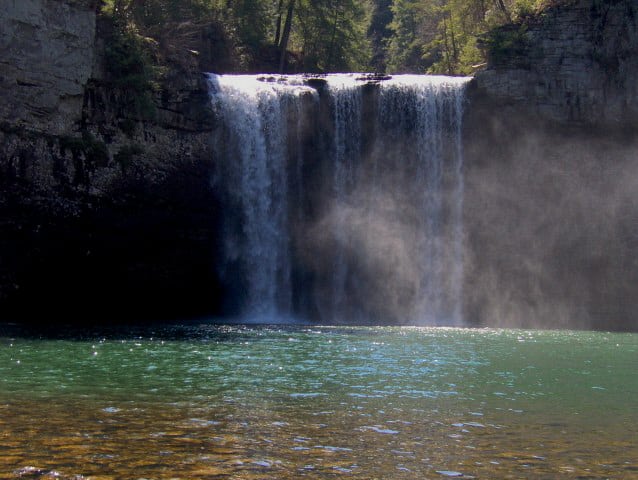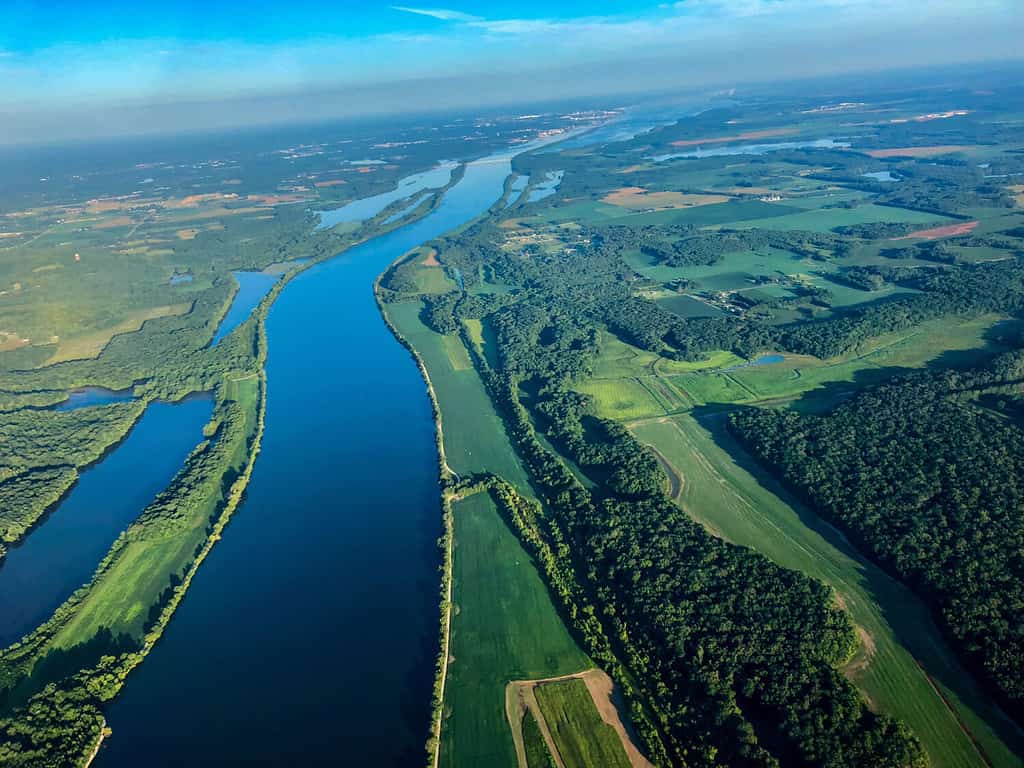Deer hunting in Tennessee is on a long-term upswing, with the Tennessee Wildlife Resources Agency projecting a population growth between 1% and 2% per year. That may not sound like a lot, but with thousands of public hunting areas and private hunting opportunities, annual takes are enormous.
Nevertheless, the deer population continues to grow, a direct reflection of careful and successful deer population management across the Volunteer State. Tennessee consistently ranks among the best states for deer hunting due to several factors.
1. Over 7,000 Public Hunting Areas

Tennessee has 7,000 public lands that are available for hunters every season.
©Brian Stansberry / CC BY 3.0, from Wikimedia Commons, the free media repository – License
Deer hunting in Tennessee offers many choices, with thousands of public land hunting opportunities across the state. The topography also varies across the state, including marshy lowlands, flat and open areas, and the Cumberland Mountains in eastern Tennessee.
These public lands cover Tennessee’s entire gamut of natural beauty, most of which is crawling with whitetail. The Cumberland Mountains are incredibly productive, and even if you come away empty-handed for the day, the jaw-dropping beauty of the area is more than worth a single, uneventful hunt.
The combination of so many public lands offers hunters an exciting choice. On the one hand, the deer population is more prolific in the lowland areas, while the Cumberland Mountains offer larger bucks. This is due to the remote aspect of the mountains, with more cover and shelter to foster a buck into old age.
2. Solid Deer Density

“Spike” refers to bucks (male deer) with antlers that do not branch.
©iStock.com/Lightwriter1949
Tennessee isn’t leading the nation in terms of deer density. However, the state does a fine job managing the population, with a yearly population growth rate of 1% to 2%. This is despite the discovery of chronic waste disease (south-west Tennessee) in 2018. Managing deer hunting in Tennessee has been up and down over the years, but it seems to be righting the ship as annual hauls are increasing yearly.
Deer herd population growth in middle Tennessee is so extensive that additional efforts are underway to nominalize the population numbers. While eastern Tennessee is probably the least populous, deer are often larger, enjoying less contact with large, well-traveled highways and other human contact.
Currently, the entire Tennessee deer population is approximately 900,000. According to the Tennessee Wildlife Resources Agency, the total deer harvest in 2022 was 162,555. This makes 2022 the third year in a row where the harvest exceeds the previous season. Indications are that deer hunting in Tennessee throughout 2023 will increase the total haul.
3. The Beauty Of The Natural Landscape and Habitat Quality

Aerial view of the Tennessee River.
©Dharris324/Shutterstock.com
No matter what you’re hunting, it’s hard not to appreciate the surrounding beauty of the landscape, and Tennessee is a stunningly beautiful state. The diversity of the Tennessee landscape is extensive, and even in the far west, there is much to appreciate.
Eastern Tennessee is exceptionally beautiful, with rolling hills and deep valleys at the foot of the Cumberland Plateau. Though Tennessee gets cold in the winter, it’s not a brutally cold state, and the weather is consistently moderate and refreshing throughout the year.
The Smokey Mountains in the east don’t encompass the full extent of what the mountain range has to offer but stand as an example of the unique beauty of the Volunteer State. Nothing is ever over or under-done. The mountains are foggy and quiet in the dawn hours; without being so large, they fill the entire horizon.
The rolling hills are gentle yet prolific, and even the lowlands feature a variety of fauna and flora that are striking in their natural environment. Tennessee is a geographical artistry that never goes too far or not far enough. Deer hunting in Tennessee brings hunters closer and more in touch with the natural environment in which they ply their trade. Tennessee is an incredible, adventurous, and beautiful landscape to explore.
4. Quality Of The Deer

Up-close pic of a whitetail buck.
©David Brickner/Shutterstock.com
Tennessee isn’t ripe to break records on an annual basis. However, the deer throughout the state are healthy and robust. The average buck is 140 lbs, while the average doe is 100 lbs. There is concern over chronic wasting disease in southwest Tennessee, though active measures are being taken to cull the CWD population.
Less than a century ago, deer hunting in Tennessee only extended throughout a handful of counties. Deer populations exploded in the succeeding century, with healthy whitetail prevalent in all 95 Tennessee counties.
Deer hunting in Tennessee isn’t an underwhelming experience, comparatively speaking. The growth chart for whitetail in Tennessee is the same as most other places, reaching maturity in a year and a half or two. Once mature, a doe will birth one or two fawns per year.
5. Ever-Changing Weather Fronts

Fronts move through Tennessee frequently, providing hunters with excellent opportunities.
©Verin/Shutterstock.com
Deer hunting in Tennessee often boils down to meteorology. That’s right. Predicting the weather and fronts moving through is an exceptional tool in any hunter’s bag. Weather in Tennessee changes quickly and frequently throughout the year.
Those changes equal results when you know where to be and when. Hunting right before and right after a front moves through is critical to catching bucks on the move. Tennessee isn’t excessively random in its weather patterns, but fronts tend to move through frequently enough to present numerous opportunities each season.
At elevation, such as the eastern end of the state, wind also becomes more of a factor. Some people believe deer lay down on windy days. That’s not necessarily true. Deer position themselves with the wind at their back so they can detect what’s in front of them with their eyes and scent what’s behind them. As a hunter, learning to play the wind and predict the moments before a front hits will drastically improve your annual haul. Tennessee provides plenty of opportunities to do just that.
Summary Of The Reasons Tennessee Is Ideal For Deer Hunting
| Number | Reason |
|---|---|
| 1. Over 7,000 Public Hunting Areas | Well over a million acres of public hunting land |
| 2. Solid Deer Density | Deer population exceeds 900,000 throughout the state |
| 3. The Beauty Of The Natural Landscape And Habitat Quality | Tennessee features a highly diverse, natural landscape |
| 4. Quality Of The Deer | Deer in Tennessee are healthy and robust, with a few exceptions in the south-west |
| 5. Ever-Changing Weather Fronts | Tennessee experiences numerous and rapidly changing weather fronts |
The photo featured at the top of this post is © Tom Reichner/Shutterstock.com
Thank you for reading! Have some feedback for us? Contact the AZ Animals editorial team.







